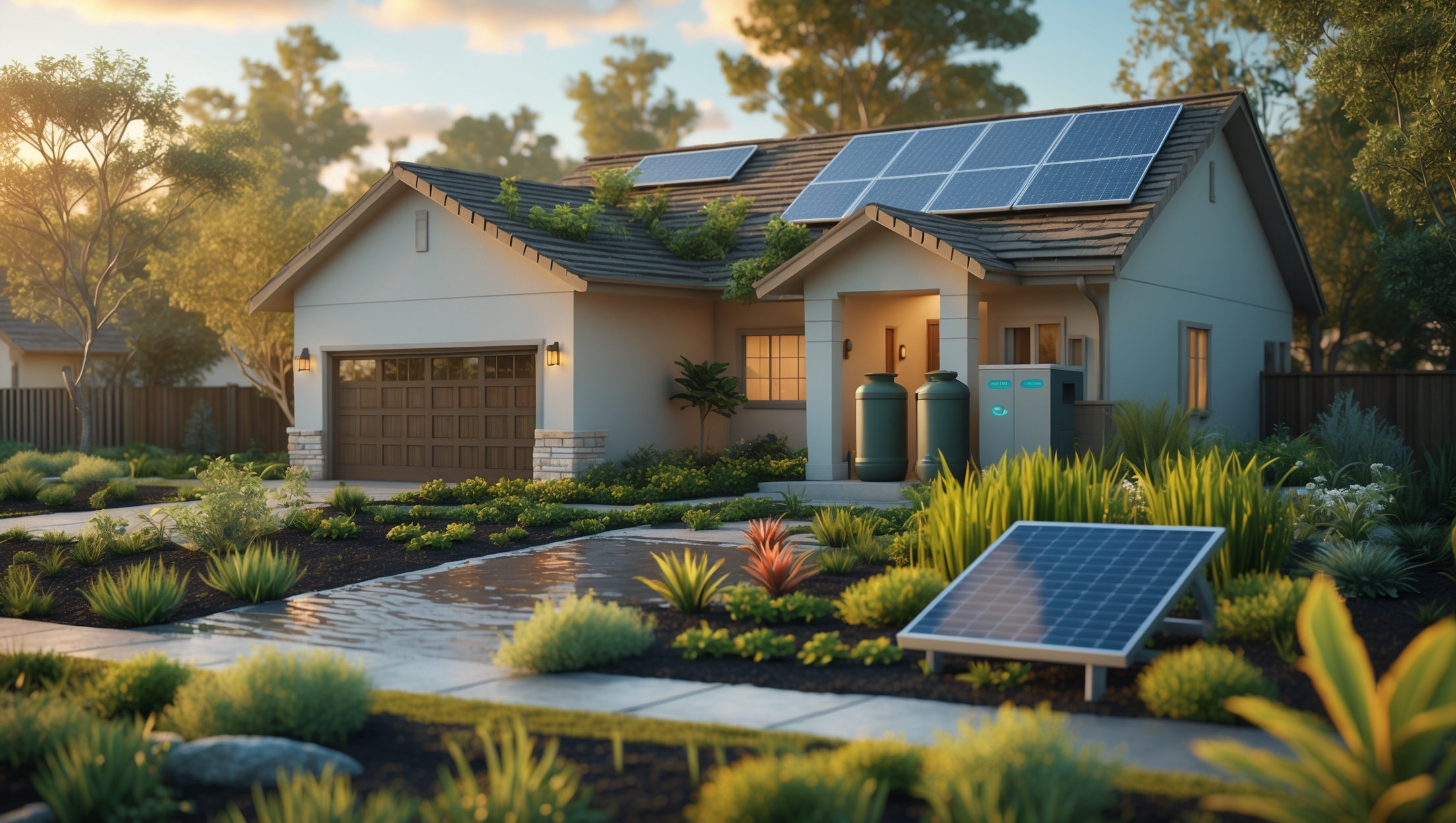Introduction: Why Legal Compliance Matters in Home Rainwater Harvesting
Rainwater harvesting is a cornerstone of sustainable living, providing an eco-friendly solution to water conservation, reducing your reliance on municipal water supplies, and lowering your utility bills. With increasing climate variability and growing interest in self-sufficiency, more homeowners are turning to rainwater harvesting systems to supplement their water needs for gardening, irrigation, and even potable use where permitted. However, installing and operating a rainwater harvesting system isn’t as simple as setting up a barrel under your gutters. In many regions, specific laws, building codes, and permit requirements govern the collection and use of rainwater. These regulations exist to ensure environmental protection, prevent unintended consequences like mosquito breeding or water contamination, and protect municipal water resources. Failing to comply with local requirements can result in fines, forced removal of your system, or even legal action. This guide provides a detailed, practical roadmap to navigate the permitting, compliance, and inspection processes for home-scale rainwater harvesting systems, so you can collect water sustainably—and legally.
Understanding Rainwater Harvesting Regulations: Why Do They Exist?
State and Local Laws: The Patchwork of Regulation
Rainwater harvesting regulations vary dramatically across regions, sometimes even between neighboring cities. Some states encourage rainwater harvesting with incentives and streamlined permits, while others restrict it or impose stringent safety requirements. The rationale for regulation includes:
- Water Rights: In arid regions, water rights are tightly regulated, and rainwater may be considered part of a watershed’s allocation system.
- Public Health and Safety: Improperly designed systems can breed mosquitoes, contaminate groundwater, or cause structural issues.
- Environmental Impact: Large-scale harvesting can alter natural runoff patterns, affecting downstream users and ecosystems.
Common Regulatory Bodies
- City or County Building Departments
- State or Provincial Environmental Agencies
- Public Health Departments
- Local Water Utilities
- Homeowners’ Associations (HOAs)
Researching Local Requirements: The Essential First Step
How to Find Out What’s Required in Your Area
Don’t rely on generic advice—local ordinances are what matter. Start your compliance journey by:
- Visiting your city or county’s official website and searching for “rainwater harvesting,” “stormwater management,” or “water conservation.”
- Contacting your local building department or planning office directly.
- Reviewing state-level environmental protection agency resources.
- Reading your HOA’s covenants, conditions, and restrictions (CC&Rs).
Document all requirements, including system size limits, water use restrictions (e.g., irrigation only), setback distances, filtration mandates, mosquito abatement measures, and overflow management rules.
Key Questions to Ask Officials
- Is rainwater harvesting legal for residential use in my jurisdiction?
- What permits or notifications are required before installation?
- Are there regulations on system size, location, or appearance?
- Are there specific rules for potable versus non-potable use?
- What inspections are required before or after installation?
- Are there incentives, rebates, or technical support programs available?
Permit Types: What Might Be Required?
The types of permits and approvals vary, but typically include:
- Building Permit: Required if your system involves significant structural work, such as large cisterns, underground tanks, or new plumbing connections.
- Plumbing Permit: Needed if connecting your system to indoor plumbing or irrigation systems, especially if using rainwater for toilets or laundry.
- Electrical Permit: If installing powered pumps, sensors, or automated controls.
- Environmental/Stormwater Permit: For large tanks, systems near protected waterways, or projects affecting runoff patterns.
- HOA Approval: If you live in a community with design or landscaping restrictions.
Step-by-Step: Navigating the Permitting Process
1. System Planning and Design
Before you can apply for permits, you must have a clear system design. This should include:
- Location and capacity of storage tanks or barrels
- Gutter and downspout modifications
- First-flush diverter details
- Overflow route (e.g., to storm drain or garden swale)
- Filtration and mosquito prevention measures
- Pump and irrigation connections (if applicable)
Many municipalities require a scaled site plan and plumbing schematic as part of your application.
2. Application Submission
Compile required documents, which may include:
- Permit application forms
- Site and system drawings
- Product specifications (tanks, pumps, filters)
- Neighbor or HOA notification letters
- Environmental impact assessments (for large or sensitive sites)
Submit all paperwork to your local permitting office. Some jurisdictions offer online submission portals, while others require in-person visits.
3. Plan Review and Corrections
Expect officials to review your plans for code compliance. They may request revisions for:
- Improper tank siting or setbacks
- Inadequate overflow provisions
- Potential cross-connections with potable water
- Lack of mosquito abatement features
Respond promptly to requests for additional information to avoid permit delays.
4. Permit Approval and Posting
Once approved, you’ll receive your permit. In most cases, you must post it at the job site during installation. Keep all documentation handy for inspections.
5. Inspections
After installation, schedule required inspections. Inspectors will check:
- System placement and secure anchoring
- Proper backflow prevention
- Overflow and drainage safety
- Screening and covers for mosquito control
- Compliance with plans and code
Passing inspection is usually required before you can begin using the system.
Common Compliance Pitfalls—and How to Avoid Them
- Skipping Permits: Even for small systems, failure to obtain permits can lead to fines or forced removal if discovered.
- Improper Cross-Connections: Connecting rainwater to potable plumbing without proper backflow devices is both illegal and dangerous.
- Overflow Mismanagement: Overflow must be directed away from foundations and public right-of-way to avoid property damage and liability.
- Ignoring Mosquito Control: Unscreened openings can become mosquito breeding grounds, violating health codes.
- Nonconforming Tanks: Tanks must often meet specific material or color requirements to prevent algae growth and blend with surroundings.
- HOA Violations: Many HOAs restrict visible tanks or require landscape screening—always check before installation.
Case Examples: Permitting in Different Regions
1. Arizona
Arizona encourages rainwater harvesting and provides tax incentives for approved systems. Permits are usually required for tanks over 1,000 gallons or when integrating with indoor plumbing. Systems must include mosquito-proof covers and backflow prevention.
2. Texas
State law explicitly allows rainwater harvesting, but local building permits may still apply. Systems used for potable water require professional design and strict filtration and disinfection protocols, with regular inspections.
3. Colorado
Once heavily restricted, Colorado now permits residential rainwater harvesting up to 110 gallons per property, provided it is used for outdoor purposes and does not affect downstream water rights. Permits are typically not required for small aboveground barrels, but larger or interconnected systems may trigger additional regulations.
4. Pacific Northwest (Oregon, Washington)
Rainwater harvesting is generally permitted and encouraged for non-potable uses. Plumbing permits are required for indoor or landscape irrigation connections. Tanks must comply with seismic anchoring codes due to earthquake risk.
Best Practices for Legal, Sustainable Rainwater Harvesting
- Plan for Safety: Include child-proof lids, insect screens, and secure anchoring in your design.
- Document Everything: Keep copies of permits, plans, and inspection reports for future reference or property sales.
- Use Approved Materials: Many jurisdictions require food-grade or UV-resistant tanks to prevent contamination.
- Maintain Your System: Regularly inspect for leaks, clogs, and mosquito entry points to remain in compliance.
- Stay Informed: Laws and codes change; subscribe to local government updates or attend workshops on water conservation.
What to Do If You Inherit a Non-Compliant System
If you purchase a home with an unpermitted or non-compliant rainwater harvesting system, take the following steps:
- Contact your local permitting office for an evaluation.
- Assess the system for safety and code compliance—especially plumbing connections and overflow management.
- Make necessary upgrades or modifications to bring it up to code.
- Schedule a formal inspection and obtain retroactive permits if possible.
Disclosure of such systems is often required in real estate transactions, so ensure all paperwork is in order.
Resources for Homeowners
- US EPA Rain Barrel Resources
- Harvesting Rainwater Regulations Database
- Local city or county building department websites
- Extension offices and Master Gardener programs
- Rainwater harvesting installer certification courses
Conclusion: Building a Future-Proof, Legal Rainwater Harvesting System
Embarking on a rainwater harvesting project is a rewarding step toward self-sufficiency and environmental stewardship, but it must be approached with care and diligence. Navigating the maze of permits, codes, and compliance requirements may seem daunting, but it ensures your system is safe, legal, and sustainable for years to come. By investing the time to research local laws, design a compliant system, and follow best practices, you not only protect yourself from legal headaches but also contribute to the broader acceptance of sustainable water solutions in your community. Remember, regulations are not arbitrary obstacles—they are designed to balance individual initiative with public health and environmental protection. As you move forward, treat your rainwater harvesting system as a model for responsible ecological citizenship. Keep documentation up to date, maintain your system regularly, and stay engaged with evolving regulations. In doing so, you’ll ensure your investment in green technology truly benefits both your household and the planet. Sustainable living starts with informed, proactive choices—let legal compliance be the foundation of your rainwater harvesting journey.





The article touched on potential fines for not being in compliance. Is there a way to estimate upfront costs, including permits and any fees, before I even start buying equipment for a small-scale system?
Yes, you can usually estimate upfront costs by contacting your local permitting office or visiting their website. They can provide information on permit fees, inspection costs, and any other charges related to rainwater harvesting systems. This way, you’ll have a clear idea of legal costs before you invest in equipment. Some regions also offer fee schedules or planning guides online to help with budgeting.
You mentioned that improperly designed systems can breed mosquitoes or contaminate groundwater. Are there minimum design standards or inspections that most areas require before you can start using your rain barrels legally?
Most areas require rainwater harvesting systems to meet certain minimum design standards, such as using mosquito-proof screens and secure lids on barrels to prevent breeding. Some regions also require permits or inspections, especially if your system is larger or connected to indoor plumbing. It’s best to check with your local building or environmental health department for specific requirements and to ensure compliance before installing your rain barrels.
I see that improper systems can result in fines or legal trouble. What are the most common compliance mistakes that homeowners or small business owners make when installing a home-scale rainwater system, and how can they avoid them?
Common compliance mistakes include installing systems without proper permits, failing to follow local plumbing or building codes, and using rainwater for prohibited purposes like drinking without treatment. To avoid these issues, always check local regulations before installing, obtain necessary permits, and work with licensed professionals if required. Regularly maintain your system and document compliance steps to stay within legal guidelines.
I noticed the article mentions that some states offer incentives for installing rainwater harvesting systems, while others have strict regulations. How can I quickly find out what the specific rules or incentives are for my particular city or county?
To find out the rules or incentives for your city or county, visit your local government’s website and search for rainwater harvesting or water conservation programs. You can also contact your city or county planning department directly. They should be able to provide the latest regulations, permit requirements, and any available financial incentives for your area.
Could you explain a bit more about the types of permits a typical homeowner might need for a small-scale system meant just for garden irrigation? I want to avoid accidentally setting up something that might not be allowed in my area.
For a small-scale system used solely for garden irrigation, many areas require a simple permit, if any. This might be a plumbing, building, or specific rainwater collection permit. Some regions have guidelines on tank size, water usage, or backflow prevention. It’s important to check with your local building or environmental department to see if you need to submit plans or follow set installation rules. Requirements can vary a lot by location, so getting local confirmation is the safest step.
If I’m only using a small rain barrel for gardening in my backyard, do I still need to apply for permits or follow strict regulations, or are there exemptions for low-capacity systems like this?
For small-scale rainwater harvesting, like using a rain barrel for backyard gardening, many localities have exemptions or minimal requirements. However, rules can vary by city or state. Often, low-capacity systems do not need permits, but it’s wise to check with your local water authority or municipal office to confirm whether any specific guidelines apply in your area.